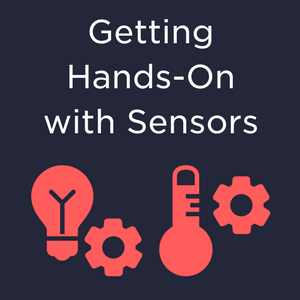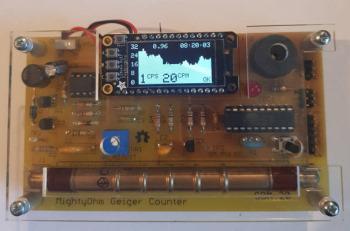CT220BMV-HS5 Contactless Current Sensor Carrier ±1.5mT/15G
Available with a lead time
Expect dispatch between Oct 13 and Oct 14
Quantity Discounts:
- 10+ $7.68 (exc GST)
- 25+ $7.44 (exc GST)
Pololu are offering these breakout boards with support from Allegro Microsystems as an easy way to use or evaluate their CT220 tunneling magnetoresistance (TMR), contactless current sensors; Pololu therefore recommend careful reading of the CT220 datasheet (2MB pdf) before using this product. The following list details some of the sensors’ key features:
- Contactless current sensing measures the magnetic field of current flowing through nearby conductor
- Based on Allegro’s patented XtremeSense™ TMR (tunneling magnetoresistance) technology
- Does not require breaking the circuit to insert the sensor in series with the current path
- Inherently high electrical isolation
- Analog output voltage proportional to magnetic field can be converted into an accurate current measurement (with calibration)
- High linearity and resolution
- Stable performance over temperature
- Bidirectional (works in AC or DC systems)
- FLAG output indicates when field is above 90% or below 10% of full range
- Typical 20 µs response time
- On-board RC filter for reduced noise with 30 kHz bandwidth
- Operating temperature range of -40 °C to 125 °C
- Compact 0.4? × 0.62? board with slots for attaching to current-carrying wire
- Connection options: JST SH-style 4-pin connector (works with Pololu's 4-pin JST SH-style cables) or 0.1?-pitch pins
Details for item #5352
This carrier board features the CT220BMV-HS5, which has a magnetic field range of ±1.5 mT (±15 G). Its output sensitivity is 1500 mV/mT when VDD is 5 V (or 990 mV/mT when VDD is 3.3 V). This version can be visually distinguished from the other versions by a marking that starts with AC printed on the sensor IC, as shown in the picture above (the silkscreen also has a blank white box that can be used for adding customized identifying markings).
| IC Part Number | Range | Supply Voltage | Sensitivity @ 5V | Zero Point @ 5V | Size |
|---|---|---|---|---|---|
| CT220BMV-HS5 | ±1.5 mT (bidirectional) | 2.7 V to 5.5 V | 1500 mV/mT | 2.5 V | 0.4?×0.62? |
The sensor’s current range and current sensitivity depend on its distance from the conductor, along with other parameters like the conductor’s geometry and angle relative to the board. When the board is tied to a round wire as pictured below, the overall diameter of the wire (with insulation) will be the main factor, and these graphs can help you estimate the sensor’s range and sensitivity for wires of different thicknesses. However, you should calibrate the sensor in your particular setup for best results (see Converting the sensor output into a current reading below).
Using the sensor
This CT220 carrier board is designed to measure a current running parallel to the long axis of the board, which generates a magnetic field forming concentric circles around the current conductor. Two pairs of slots along the sides of the board provide a good way to attach the board to a wire with small zip ties (cable ties) or similar fasteners.
The sensor requires a supply voltage of 2.7 V to 5.5 V to be connected across VDD and GND. The sensor outputs a ratiometric analog voltage on OUT that is centered at VDD/2 and changes according to the magnetic field it senses.
When measuring current in a conductor on the same side of the board as the sensor (over the IC, such as with the sensor tied to a wire as shown above), current flowing in the direction of the red arrow in the picture above increases the output voltage, while current flowing in the opposite direction decreases the output voltage. If the conductor is instead on the opposite side of the board from the sensor (under the IC), these directions are flipped.
The FLAG pin is normally high and drives low when the magnetic field is above 90% or below 10% of the full field range.
These connections can be made through the board’s JST SH-style 4-pin connector, which works with Pololu's 4-pin JST SH-style cables, or with a set of through-holes that are spaced with a 0.1" (2.54 mm) pitch and compatible with 0.1" male headers and solderless breadboards.
Converting the sensor output into a current reading
To get accurate current readings from the CT220, it is necessary to calibrate it in your application setup. A simple way to do this involves the following two steps:
- Calibrate the sensor’s offset b by recording its output voltage with zero flowing current.
- Apply a known current A1 to the conductor and measure the sensor’s output voltage V1. This lets you calculate the sensor’s current gain (sensitivity) a with the equation:
Then, given a voltage VOUT measured from the sensor, you can calculate the corresponding current with the gain a and offset b:
To illustrate this with an example, let’s say you measure your sensor with no current flowing in the wire and get 2.5 V. Next, you put 10 A through your wire and measure the sensor voltage again, this time getting 2.8 V. That means the output voltage changed by 0.3 V for 10 A, so the sensitivity is 0.03 V/A, or 30 mV per A.
For better accuracy in bidirectional current applications, Allegro recommends a slightly more thorough calibration procedure that involves applying a known current in both directions; see the CT220 datasheet (2MB pdf) for details.
Schematic and dimension diagrams
The dimension diagram is available as a downloadable PDF (301k pdf).
Dimensions
| Size: | 0.4" × 0.62" × 0.2" |
|---|---|
| Weight: | 0.4 g |
General specifications
| Magnetic field sensitivity: | 1500 mV/mT1 |
|---|---|
| Minimum logic voltage: | 2.7 V |
| Maximum logic voltage: | 5.5 V |
| Supply current: | 1.2 mA2 |
| Magnetic field range: | -1.5mT to +1.5mT |
| Current sensor: | Allegro CT220BMV-HS5 |
Identifying markings
| PCB dev codes: | cs11a |
|---|---|
| Other PCB markings: | 0J15332 |
Notes:
- 1
- At VDD = 5 V.
- 2
- Typical.
File downloads
CT220 datasheet (2MB pdf)
Dimension diagram of the CT220PMV-HS5 Contactless Current Sensor Carrier (301k pdf)
3D model of the CT220PMV-HS5 Contactless Current Sensor Carrier (3MB step)
Drill guide for the CT220PMV-HS5 Contactless Current Sensor Carrier (39k dxf)
This DXF drawing shows the locations of all of the board’s holes.
Recommended links
Allegro product page for the CT220, where you can find application notes and other resources.
Exact shipping can be calculated on the view cart page (no login required).
Products that weigh more than 0.5 KG may cost more than what's shown (for example, test equipment, machines, >500mL liquids, etc).
We deliver Australia-wide with these options (depends on the final destination - you can get a quote on the view cart page):
- $3+ for Stamped Mail (typically 10+ business days, not tracked, only available on selected small items)
- $7+ for Standard Post (typically 6+ business days, tracked)
- $11+ for Express Post (typically 2+ business days, tracked)
- Pickup - Free! Only available to customers who live in the Newcastle region (must order online and only pickup after we email to notify you the order is ready). Orders placed after 2PM may not be ready until the following business day.
Non-metro addresses in WA, NT, SA & TAS can take 2+ days in addition to the above information.
Some batteries (such as LiPo) can't be shipped by Air. During checkout, Express Post and International Methods will not be an option if you have that type of battery in your shopping cart.
International Orders - the following rates are for New Zealand and will vary for other countries:
- $12+ for Pack and Track (3+ days, tracked)
- $16+ for Express International (2-5 days, tracked)
If you order lots of gear, the postage amount will increase based on the weight of your order.
Our physical address (here's a PDF which includes other key business details):
40 Aruma Place
Cardiff
NSW, 2285
Australia
Take a look at our customer service page if you have other questions such as "do we do purchase orders" (yes!) or "are prices GST inclusive" (yes they are!). We're here to help - get in touch with us to talk shop.
Have a product question? We're here to help!
Videos
View AllGuides
The Maker Revolution
Getting Hands-on with Sensors
Projects
WhyzaGC - Feather ESP32 addon to the MightyOhm Gieger Counter
Makers love reviews as much as you do, please follow this link to review the products you have purchased.











Product Comments